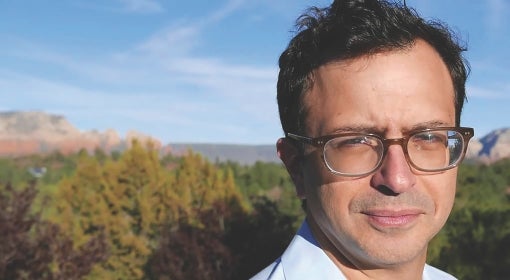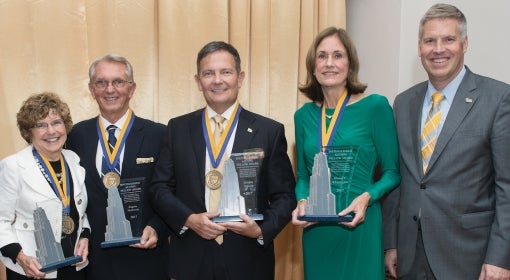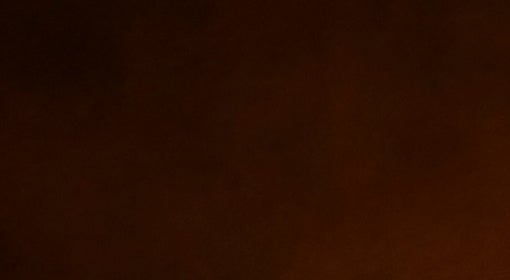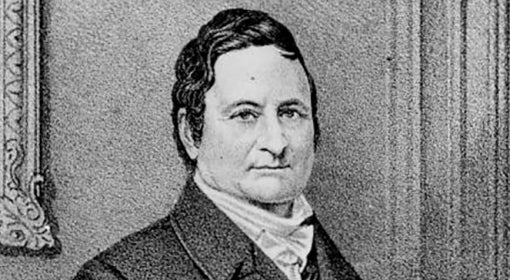 The book’s open pages reveal a cacophony of color. Vibrant greens depict the thick foliage of a jungle where a grinning cartoon bear lies on his back, a little boy in a red loincloth seated atop his belly. The students in the room are most familiar with this version of The Jungle Book—the cheery 1967 Disney version, captured here in storybook form. Most were only recently familiarized with Rudyard Kipling’s original story collection from 1894, which is also spread out across the table in Hillman Library. This version is illustrated, too, but in black and white, with realistic drawings of sharp-toothed tigers and wolves.
The book’s open pages reveal a cacophony of color. Vibrant greens depict the thick foliage of a jungle where a grinning cartoon bear lies on his back, a little boy in a red loincloth seated atop his belly. The students in the room are most familiar with this version of The Jungle Book—the cheery 1967 Disney version, captured here in storybook form. Most were only recently familiarized with Rudyard Kipling’s original story collection from 1894, which is also spread out across the table in Hillman Library. This version is illustrated, too, but in black and white, with realistic drawings of sharp-toothed tigers and wolves.
Instructor Sreemoyee Dasgupta holds up the whimsical Disney version for her students to see. This book is for a mid-century culture of fun, entertainment, and socialization. In contrast, the austere, late-19th-century version is for a more agricultural, colonial society.
Dasgupta, who teaches a literature course called Childhood’s Books, has brought her students to Hillman today for a special class created with the help of the University Library System’s Archives and Special Collections department. Librarians readied six different tables for the visit, each one dedicated to a classic tale and adorned with related books from a variety of eras. Throughout the room, students bend over copies of The Wizard of Oz, Alice in Wonderland, Peter Pan, Jack the Giant Killer, and children’s adaptations of Harriet Beecher Stowe’s Uncle Tom’s Cabin.
“Feel free to take pictures, but this is a pen-free zone,” says Children’s Literature Librarian Clare Withers, who helped coordinate today’s selections with her colleagues from Special Collections. The undergrads use pencils to scratch out their impressions of the artifacts on a class assignment sheet.
The Special Collections department holds an 84,000-item inventory of rare books, maps, magazines, playbills, comic books, and other historic items under Pitt’s guardianship. Some are kept at Hillman Library, others in off-site storage, and nearly all can be accessed by researchers at Pitt.
The Special Collections librarians welcome class visits, inviting students to tap into the insights offered in the collection’s titles. Earlier in the semester, Special Collections hosted a science-fiction writing class, which came to check out pulp magazines of space-age tales. Today’s volumes are a sampling from the Elizabeth Nesbitt Collection of children’s literature, a trove of more than 12,000 kids’ books dating back to the 1600s.
“There’s a lot you can learn about the culture of childhood from seeing these items that you couldn’t from just reading the stories,” Dasgupta says.
“To actually touch the materials, touch the book, and see the colors is a different experience,” says junior Kendra Bree. By the end of a visit spent leafing through history, Bree and her classmates leave with new perspectives on old stories.
This article appeared in the Winter 2018 issue of Pitt Magazine.




